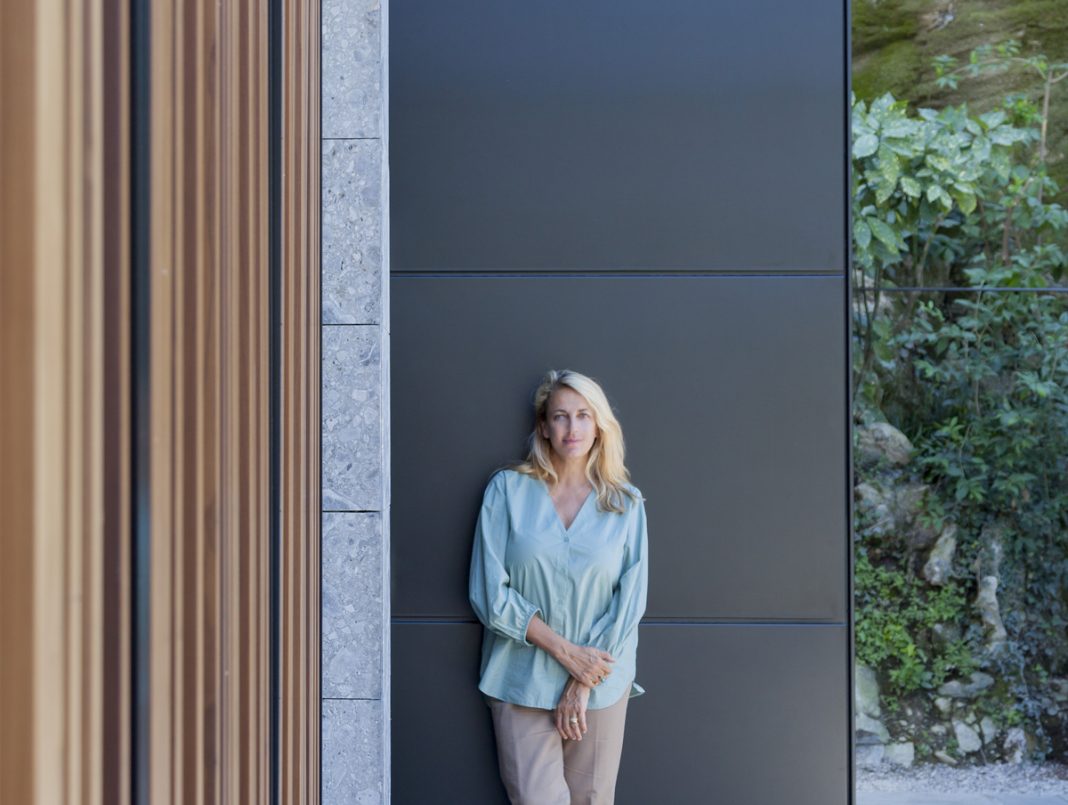Urquiola’s curriculum vitae speaks for itself. Born in 1961, she studied with the masters – Achille Castiglioni, Eugenio Bettinelli, Vico Magistretti and Piero Lissoni –, and her name appears alongside the leading furniture companies – Moroso, Agape, Mutina, Kettal, Molteni&C, B&B Italia, Kartell, Andreu World and Haworth, just to name a few. She divides her work between design and architecture, while also overseeing exhibitions and installations. Last but not least, she is Art Director of Cassina.
Her projects are also biographical stories, revealing the strong identity of their author, who is capable of combining, with supreme delicacy, a logical and rational approach and profound emotional sensitivity. She has a ‘changeable, evolving’ personality much like her conception of objects and space, to which she adapts with extraordinary malleability, constantly overcoming challenges and broadening the horizons of the possible. She has palpable, contagious energy that is polychrome like the palette from which she draws to paint the furniture world.

Cassina @ IMM Cologne 2018
Photo © Stefano De Monte
As Art Director of Cassina, how do you view the company?
I often hear people say that “Cassina is a classic company”, but ‘classic’ is a relative and rather inaccurate term. The company has been active in the design world for 90 years, which means talking to people who have an idea about design and share the same enthusiasm for it, not just from a commercial point of view, but also in the broadest sense: designing understood as ‘getting out of your comfort zone’ and devoting yourself to something whose result is unpredictable and arises from a dialogue with wonderful people. Cassina is a company that has experienced important social changes, reflecting them in its own history and thus generating many stories and paths. It is a classic brand because it preserves timeless products, such as the Maricunga by Vico Magistretti or La Rotonda by Mario Bellini. With its archive of over 600 pieces, it has reinterpreted objects with a contemporary aesthetic, which means not only their appearance, but also working on technologies to make the object more sustainable and logical. At the same time, we must continue to create other interesting products and present them in the most appropriate way, and this is another matter altogether. So there is a double speed and concern that makes the work doubly complex. It is therefore a great honor and responsibility for me.

Showroom Cassina, Milano
How are you developing this ‘contemporary aesthetic’?
I believe that serious things should be approached with levity. So we continue to celebrate Cassina’s 90th anniversary, or “9.0”, a metaphor for digital implementation. 9.0 refers to something that is open to the future. We are therefore thinking about color, materials and spaces, as well as about how to bring projects to life in a different way, dialoguing with new designers such as Konstantin Grcic, the Bouroullec brothers and Patrick Jouin. We are also working on the company, starting with a restyling of the headquarters, and now on the showrooms: I like the fact that there are important pieces in these exhibition spaces, each of which has its own energy, creating sets that communicate and tell a story. People must not only find objects here, but must perceive a new concept of living, as we think of it, namely ‘evolution’.
Designing is telling a story: what story do you tell?
The narration of every project changes from time to time. In reference to design, Achille Castiglioni said that “you can do what you want, reach every compromise, follow the processes with difficulty, but there is always a fundamental element of the project”, and he really believed that. When he questioned us at university, he always asked: “What is the fundamental element of this project?” And we panicked, even though it was a simple sentence. There are no compromises in this regard. However, we relate to many ways of living, so even my way of working can adapt to different contexts.










